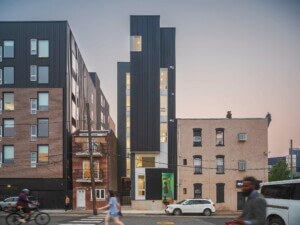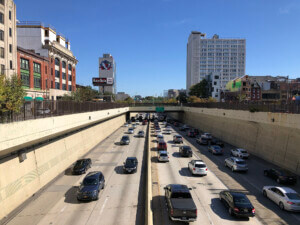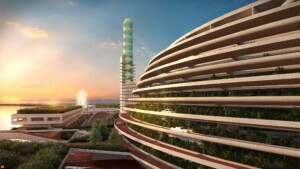Less than 20 miles downriver from Philadelphia, where a multi-billion-dollar redevelopment of that city’s Delaware River waterfront is due to kick off next year, another historic Pennsylvania city is slated for a catalytic waterfront makeover that, in this instance, aims to spur economic development, enhance tourism opportunities, and bring together and celebrate a community that hasn’t always had it easy.
The city in question is Chester, the oldest in Pennsylvania. Incorporated in 1682, Chester is a small and once-prosperous city—declared a state-designated financially distressed municipality in 1995, it is now under receivership—that’s experienced a disproportionate amount of turbulence over its very long history: Early 20th-century race riots, devastating mid-century economic decline, political corruption, and ongoing ecological degradation and public health woes caused by a host of highly polluting industries, namely waste incinerators, located within city limits. In recent years, Chester has garnered a reputation as a city where environmental racism runs rampant.
However embattled and bruised, Chester is a dogged and idealistic community and continues to set its sights on a cleaner, healthier, and more equitable future. Over the last decade, new investments and improvements have been floated and taken hold, giving the city a modest but much-needed economic kickstart and boost in morale. The most ambitious of these city-transforming initiatives is the Riverfront Alliance of Delaware County (RADC)’s Chester Waterfront Master Plan, which commenced in 2019 and has just been formally unveiled by the RADC and Seattle-headquartered architecture and design firm NBBJ.
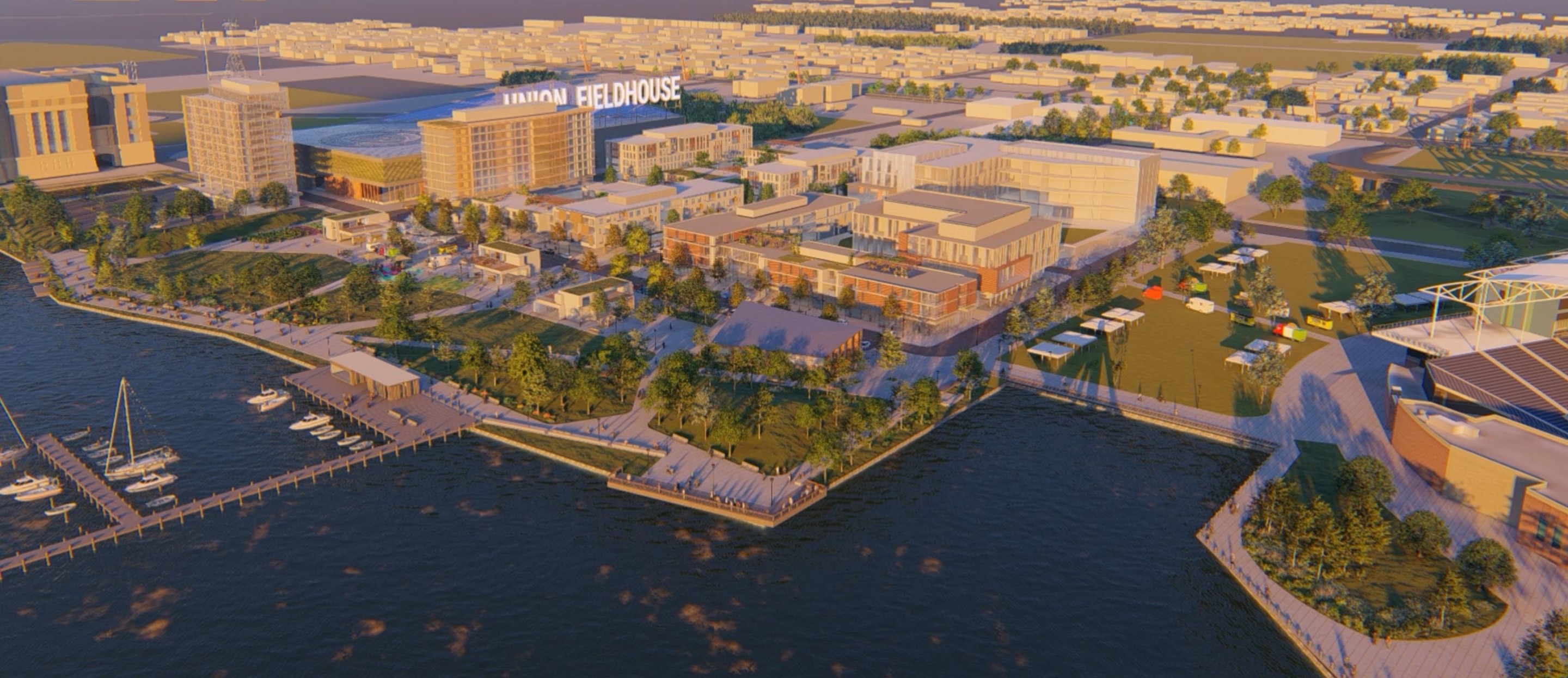
Over two decades in the making, this multi-phase, public-private revitalization scheme is set to encompass an area of 100 acres stretching along Chester’s riverfront from Highland Avenue to Norris Street. Notably, the area is centered around Subaru Park, the 18,500-seat home to professional soccer franchise the Philadelphia Union. As reported by the Philadelphia Business Journal, roughly half of the land in question is owned or controlled by Keystone Sports and Entertainment, the ownership group of the team.
As the Business Journal explained, Subaru Park, completed in 2010 just to the south of the Commodore Barry Bridge, was erected as the centerpiece of a larger waterfront development zone that never materialized due to the economic downturn and other factors. That long-awaited transformation is now finally poised to move forward. “Pandemic aside, I think the stars are all aligning here for the first time,” RADC board member Jerry Miller told the Business Journal.
As detailed in a press release revealing the master plan, the initial transformation of Chester’s waterfront district will entail several core strategies: Enhancing community access to and around the city along the East Coast Greenway and State Route 291 through improvements to public transportation as well as pedestrian and cycling infrastructure; improving the existing Barry Bridge Park and riverwalk trail while creating new public spaces for various forms of community use and recreational activities; embarking on numerous climate resiliency undertakings with a focus on stormwater management/flood protection and the planting of greenery for shading and street-side beautification; and leveraging continued investment from both local and outside sources.
Last, but not least, the master plan calls for a strategy that improves the public perception of Chester by “highlighting and amplifying its rich history, creative opportunity, and civic spirit.”
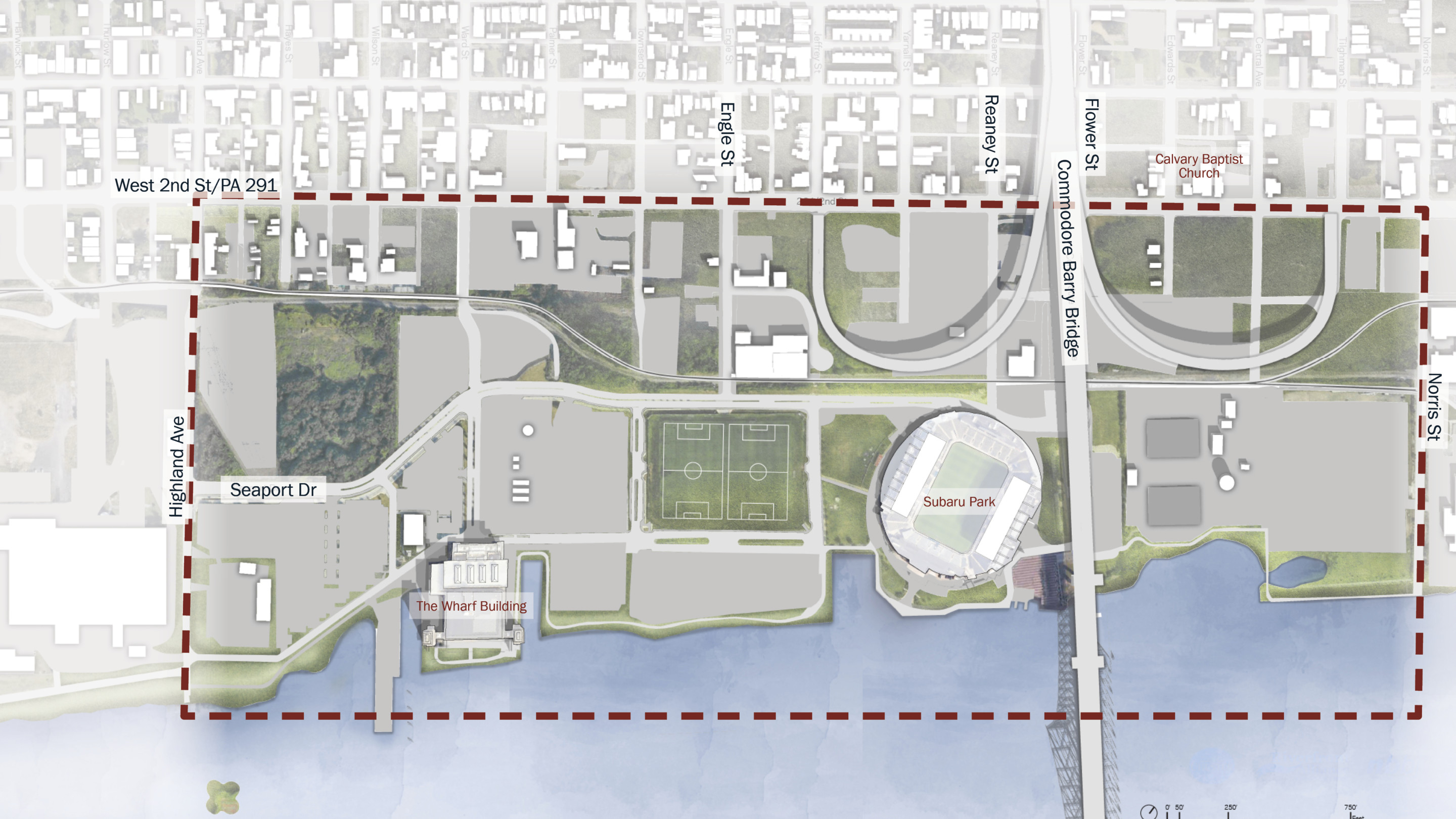
Despite economically disadvantaged Chester making national headlines over the years for less-than-desirable reasons, NBBJ planning and urban designer Chris Herlich noted that residents have “palpable” pride in their city’s history and that the community is “hungry to grow and become a true economic hub in Pennsylvania and beyond.”
Initial priority public investment areas include street improvements and other infrastructural upgrades, the design of a new park, and the implementation of a public arts program. From there, per the press release, the master plan “seeks to attract private sector support in activations like new office spaces, retail and hospitality venues, and improved sports and entertainment facilities, all strategically designed to complement and build upon existing Chester landmarks and establishments.” In other words, the realization of future phases, which would also include multifamily waterfront housing, a marina, an indoor/outdoor concert venue, and hotels, is contingent on securing development partners.
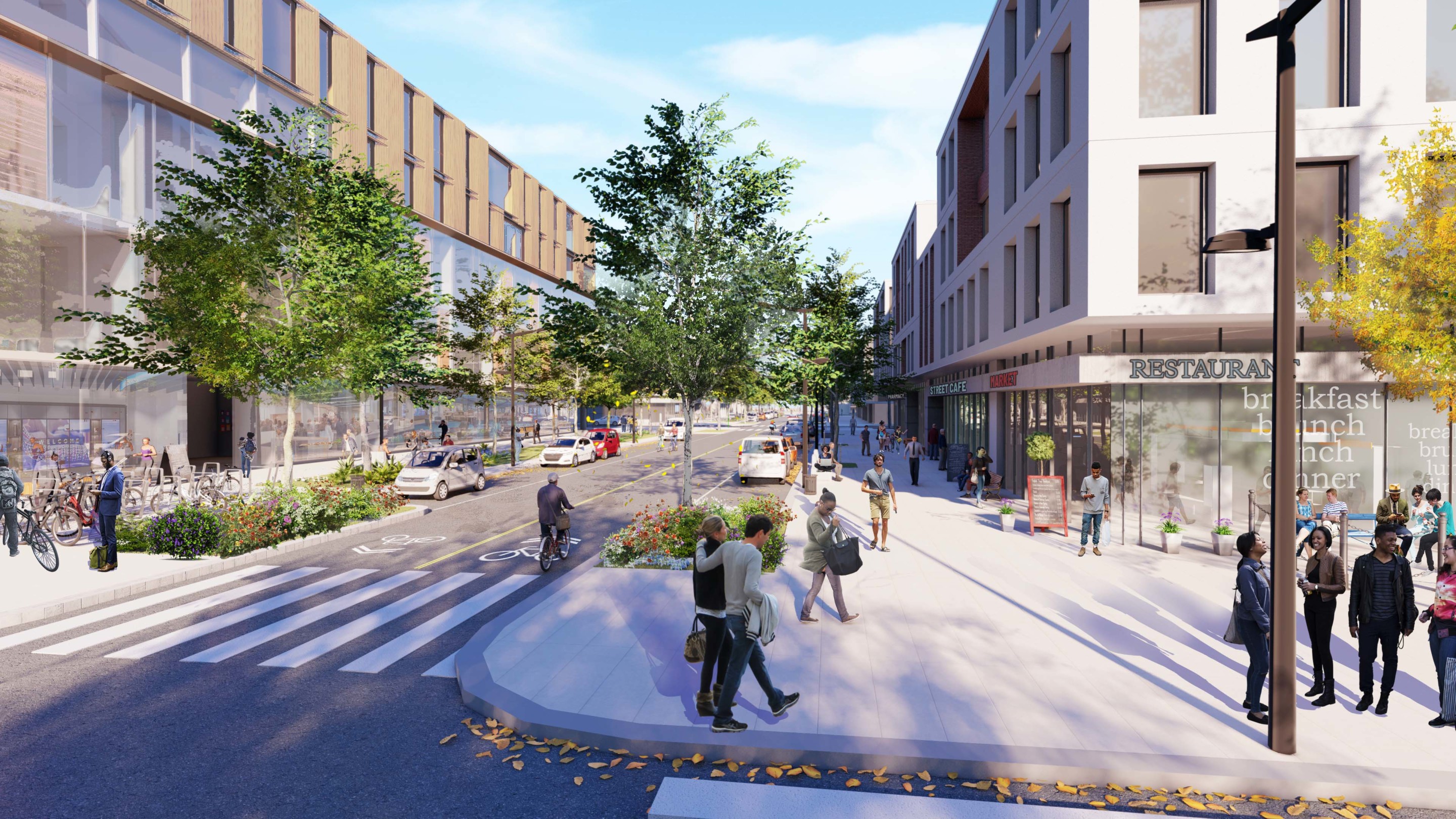
The master plan itself was funded in part by the Department of Community and Economic Development, the Philadelphia Union, M&T Charitable Foundation, and others.
Public engagement was key in crafting and finalizing the Chester Waterfront Master Plan, and the above strategies were devised though a multitude of planning sessions led by the RADC and NBBJ that brought together community stakeholders and local residents to discuss specific needs, wants, and desires.
“Chester is a tight-knit community full of character and heart. This plan outlines the strategy to safely connect the riverfront to the city and provide new opportunities for growth and development,” elaborated RADC president Tom Shoemaker in a statement. “It was critical to us to incorporate as much community feedback as possible into the development process, ensuring that this transformation incorporates the goals and aspirations of local residents for the future of the waterfront.”








